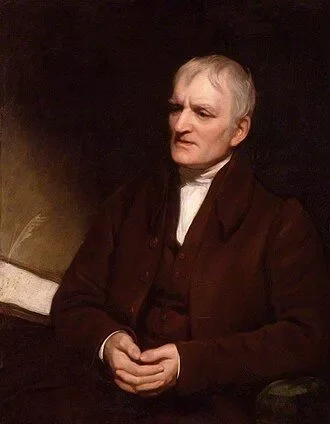Real Celebrities Never Die!
OR
Search For Past Celebrities Whose Birthday You Share

source:wikimedia.org
John Dalton
Birthday:
06 Sep, 1766
Date of Death:
27 Jul, 1844
Cause of death:
Stroke
Nationality:
British
Famous As:
Meteorologist
Age at the time of death:
77
Early Life and Education
John Dalton, born on September 6, 1766, in Eaglesfield, Cumberland, England, was a celebrated English chemist, physicist, and meteorologist. Renowned for his groundbreaking atomic theory, Dalton revolutionized the understanding of matter in chemistry.
Born into a Quaker family, Dalton’s early education was modest and largely influenced by his father and a Quaker schoolmaster, John Fletcher, who ran a private school in a nearby village. Displaying an exceptional intellect, Dalton began teaching at the young age of 12 years. He continued in this role until he moved to Manchester in 1793, where his academic career flourished.
Professional Career and Contributions
In Manchester, Dalton was influenced by the intellectual community, meeting leading scientists of the era who shaped his research. He also took up a position as a lecturer at Manchester Academy, where his work in chemistry and meteorology began to gain recognition.
Dalton’s early scientific endeavors were in meteorology, where he meticulously recorded variations in atmospheric pressure, temperature, humidity, rainfall, and wind direction. His observations laid the foundation for his later theories.
However, Dalton’s most significant contribution was his atomic theory, introduced in his book, “A New System of Chemical Philosophy” (issued in two volumes). The theory proposed that:
All matter is composed of tiny, indivisible particles called atoms.
Atoms of a specific element are identical in size, mass, and chemical properties.
Atoms of different elements combine in fixed ratios to form compounds.
He also devised a system of symbols to represent elements and their combinations, making his work accessible to other scientists. Dalton based his theory on his own experiments as well as the works of chemists like Antoine Lavoisier.
Dalton was also the first scientist to study color blindness, a condition he himself suffered from. In his paper, “Extraordinary Facts Relating to the Vision of Colours”, he attributed color blindness to defects in the eye’s color perception. This condition is often referred to as Daltonism in his honor.
John Dalton's Quote's
Later Life and Legacy
John Dalton never married and dedicated his life entirely to science. He passed away on July 27, 1844, in Manchester, England, after suffering a stroke. His legacy as the father of modern atomic theory endures to this day.
Dalton donated his eyes for research after his death, underscoring his commitment to scientific inquiry even in his final act.
Name:
John Dalton
Popular Name:
John Dalton
Gender:
Male
Cause of Death:
Stroke
Spouse:
Place of Birth:
Eaglesfield, Cumberland, England
Place of Death:
Manchester, Lancashire, England
Occupation / Profession:
Personality Type
Architect: Imaginative and strategic thinkers, with a plan for everything. Dalton’s logical, analytical nature and dedication to scientific research defined his personality. His focus and discipline were key to his monumental achievements.
He was the first person to publish a paper on color blindness, giving the condition its nickname, Daltonism.
His atomic theory remains a cornerstone of modern chemistry.
Began teaching at the age of 12 years.
His mentors, Elihu Robinson and John Gough, profoundly influenced his scientific career.
He was honored with the Fellowship of the Royal Society in 1822.
John Dalton was awarded the Royal Medal in 1826.